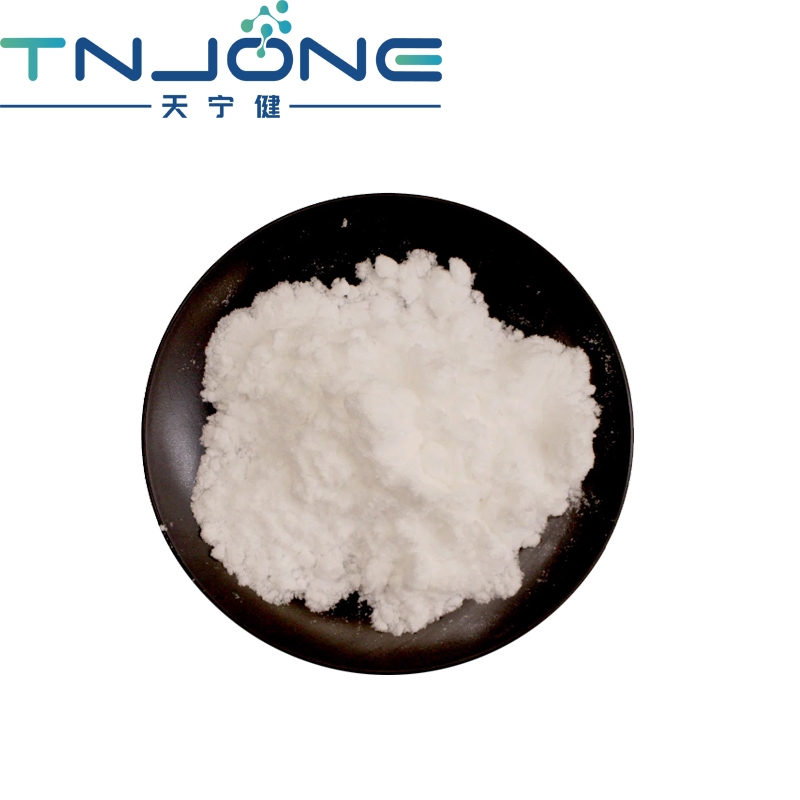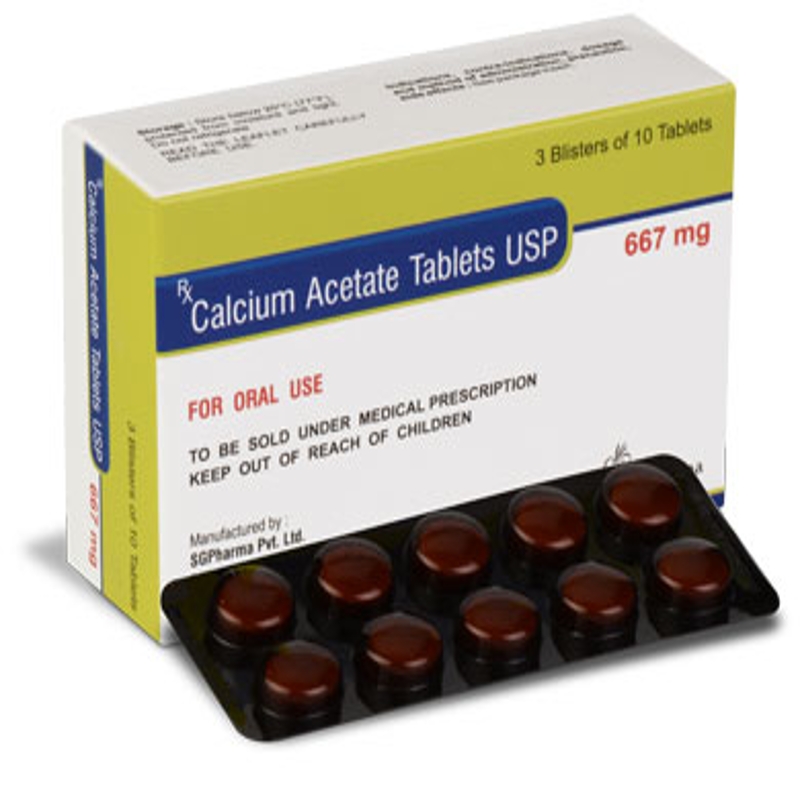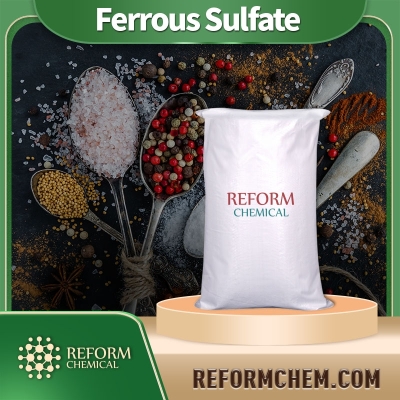-
Categories
-
Pharmaceutical Intermediates
-
Active Pharmaceutical Ingredients
-
Food Additives
- Industrial Coatings
- Agrochemicals
- Dyes and Pigments
- Surfactant
- Flavors and Fragrances
- Chemical Reagents
- Catalyst and Auxiliary
- Natural Products
- Inorganic Chemistry
-
Organic Chemistry
-
Biochemical Engineering
- Analytical Chemistry
-
Cosmetic Ingredient
- Water Treatment Chemical
-
Pharmaceutical Intermediates
Promotion
ECHEMI Mall
Wholesale
Weekly Price
Exhibition
News
-
Trade Service
Recently, one of the members of coagulation factor VIII (FVIII), the removal and retention of the B region (domain) has attracted attention.
As the "focus", the B region is also trying to prove its "usability"
.
In this issue, the editor turns into a "safety investigator" to explore whether Area B is available or not? ! Investigative Background - The role of FVIII and the functions of its various regions 1) 1
.
Figure 1 Schematic structure of full-length FVIII protein Function: FVIII plays a key role in the coagulation cascade, and its role in promoting and maintaining hemostasis has been demonstrated 2
.
The role of FVIII in coagulation is to regulate vWF and activate platelets 2
.
FVIII can increase the catalytic efficiency of FIXa in FX activation 3
.
02 Area A, Area B, Area C - each with their own responsibilities and work together Area A - the "No.
1 main force" that is indispensable in the structure of FVIII Area A structure: In FVIII, there are a total of 3 areas A - A1, A2 and A3
.
The A1 domain includes 336 amino acids, the A2 domain 337 amino acids, and the A3 domain 329 amino acids 3
.
Region A function: participates in the binding of FVIII and vWF, stabilizes FVIIIa and participates in the inactivation of FVIII, participates in the binding of FVIII and FIXa, and participates in the cyclic clearance of FVIII 3-7
.
Region B—an important part of the structure of FVIII.
Region B structure: encoded by a single huge uninterrupted exon, region B has no amino acid homology to other known proteins 1
.
B-block role: Evidence suggests that part of the B-block structure may have functional implications throughout the FVIII life cycle (Table 1) 1
.
Table 1 The role of region B in the FVIII life cycle.
Region C—the “main force of No.
2” in the structure of FVIII.
Region C structure: In the structure of FVIII, there are a total of 2 C domains—C1 and C2, and the C1 and C2 domains are respectively Consists of 153 and 160 amino acids 3
.
C-region function: The binding of FVIII and vWF is related to the C2 region7,8, which can slow down the degradation of FVIII and reduce immunogenicity6
.
FXa activates FVIII7 by interacting with the C2 region
.
Although the C1 region has no specific role in FVIII, studies conducted to date suggest that it has a role in von Willebrand factor and C2 region-linked potentiation 3
.
Investigative clue 1 - Deletion of FVIII in B region may increase immune risk and has a shorter half-life The heavy chain consists of a truncated B domain encoding 21 amino acids of the native B domain and a light chain (Figure 2) 5
.
Figure 2.
Schematic diagram of the molecular structure difference between full-length FVIII and truncated FVIII in B region.
Knockout of B region: The molecular size of FVIII knocked out in B region is reduced by about 40%.
The 980 amino acids of B region are replaced by 14 amino acid connexins.
Derived from the N- and C-termini of region B, intact domains of 90-kd and 80-kd are preserved (Fig.
3) 9
.
Figure 3 Schematic diagram of the molecular structure difference between full-length FVIII and B-region knockout FVIII C-terminal sequences are derived, but the linkages between these sequences are engineered and therefore could theoretically pose an immunological risk5
.
Breakthrough bleeding: The incidence of breakthrough bleeding is more than twice that of full-length FVIII with B knockout FVIII prophylaxis 10
.
Sensitivity to thrombin: Shorter FVIII molecules may be more easily broken down by thrombin, and B-region knockout of FVIII has increased sensitivity to thrombin compared to full-length FVIII, which may result in a shortened half-life 11
.
Aggregate formation: The propensity to form aggregates increases with decreasing B-domain ratio, whereas the propensity to form oligomers is reversed 11
.
Investigative clue 2 - FVIII deletion in region B may increase the risk of bleeding and inhibitor production The meta-analysis performed showed that the half-life of FVIII deleted in region B was approximately 3 hours shorter than that of full-length FVIII (11.
3 h vs.
14.
3 h, P=0.
001)
.
Compared with full-length FVIII, the cumulative weekly prophylactic dose of FVIII deleted in B region was 36% higher (81.
3 IU/kg/week vs.
60.
0 IU/kg/week, P=0.
11)
.
The annual bleeding rate (ABR) was 2.
5 times higher in patients treated with B-region deletion FVIII compared with full-length FVIII (16.
8/patient-year vs.
6.
6 patient-years, P < 0.
0005)
.
Compared with full-length FVIII, the breakthrough bleeding rate was more than twice as high in patients treated with B-region deletion FVIII during prophylaxis.
.
02B-region deletion FVIII - inhibitor risk12 A meta-analysis of full-length FVIII and B-region deletion FVIII inhibitor risk showed that the median time to inhibitor risk in treatment-experienced patients (PTP) was 79 exposure days , compared with exposure to full-length FVIII, exposure to B-region deletion FVIII was associated with a 7.
26-fold increased risk of inhibitors (P=0.
0016) and a 10.
8-fold increased risk of high-titer inhibitors (P = 0.
0016).
=0.
0037)
.
Summary of clues, investigation report revealed B-region is an important part of FVIII: part of the B-region structure may have functional impact throughout the FVIII life cycle 12 References: 1.
Pipe SW, et al.
Haemophilia, 2009, 15:1187-96.
2.
Samuelson Bannow B, et al.
Blood Rev.
2019 May;35:43- 503.
Mazurkiewicz-Pisarek Anna, et al.
Acta Biochim Pol, 2016, 63:11-16.
4.
Xie Fei, et al.
International Journal of Blood Transfusion and Hematology.
2006.
29(2):113-1165.
Mirella Ezban, et al.
European Journal of Haematology.
2014; 93_369–376.
6.
Dong Yanrong, et al.
China Journal of New Drugs, 2017, 26(14): 1674-16827.
Xie Fei, et al.
Foreign Medical Clinical Biochemistry and Laboratory Volume.
2005.
26(12):932 -9358.
Jia Dongchen, et al.
Chinese Journal of New Drugs, 2019, 28(14) 1681-16879.
H Sandberg, et al.
Semin Hematol.
2001 Apr;38(2 Suppl 4):4-12.
10.
Gruppo RA, et al.
Haemophilia, 2003, 9:251-60.
11.
Johnston Atholl, et al.
Ther Drug Monit, 2012, 34: 110-7.
12.
Aledort LM et al.
J Thromb Haemost.
2011 Nov;9(11):2180-92.
Approval ID: VV-MEDMAT-60338 Approval Date: 1/18/2022 Expiration Date: 1/18/2024 Statement This information is intended to help healthcare professionals better understand the latest developments in related disease areas
.
The content of the information published on this site does not mean agreeing with its description and views, but only provides more information
.
If copyright issues are involved, please contact us, and we will deal with it as soon as possible
.
For informational use by healthcare professionals only
.
Such information is not intended to replace professional medical advice in any way and should not be considered medical advice
.
If such information is used for purposes other than understanding information, this site and the author do not assume relevant responsibilities
.
RECOMMEND RECOMMENDED READ 1.
World Hemophilia Day 2021, we are still together! 2.
The Stone of Other Mountains | Experience Sharing of the Latest Approved PK Software (1): Spanish Experience 3.
Stone of Other Mountains | Experience Sharing of the Latest Approved PK Software (2): Japanese Experience 4.
Based on 17,779 Chinese Hemophilia A Cases The latest research and analysis of patients Chinese Expert Consensus on Metabolic Kinetics Guiding the Treatment of Hemophilia A" released! (1) 8.
Finally waiting for you | The first "Chinese Expert Consensus on Pharmacokinetics Guiding Hemophilia A Treatment" is released! (2) Summary of the 9.
2021 ISTH Conference | Unlocking the latest trends in hemophilia research 10.
The B domain lacks eight factors in the full-length chain of eight factors, is the B domain optional? 11.
Reduce bleeding, protect joints, and take medication safely, the evidence is here! 12.
The Stone of Other Mountains | Experience Sharing of the Latest Approved PK Software (4): Turkey Experience Experience sharing of batch PK software (5): British experience 15.
Prevention · Individualized prevention · Emerging therapies | Hemophilia A treatment in progress , we progress together
As the "focus", the B region is also trying to prove its "usability"
.
In this issue, the editor turns into a "safety investigator" to explore whether Area B is available or not? ! Investigative Background - The role of FVIII and the functions of its various regions 1) 1
.
Figure 1 Schematic structure of full-length FVIII protein Function: FVIII plays a key role in the coagulation cascade, and its role in promoting and maintaining hemostasis has been demonstrated 2
.
The role of FVIII in coagulation is to regulate vWF and activate platelets 2
.
FVIII can increase the catalytic efficiency of FIXa in FX activation 3
.
02 Area A, Area B, Area C - each with their own responsibilities and work together Area A - the "No.
1 main force" that is indispensable in the structure of FVIII Area A structure: In FVIII, there are a total of 3 areas A - A1, A2 and A3
.
The A1 domain includes 336 amino acids, the A2 domain 337 amino acids, and the A3 domain 329 amino acids 3
.
Region A function: participates in the binding of FVIII and vWF, stabilizes FVIIIa and participates in the inactivation of FVIII, participates in the binding of FVIII and FIXa, and participates in the cyclic clearance of FVIII 3-7
.
Region B—an important part of the structure of FVIII.
Region B structure: encoded by a single huge uninterrupted exon, region B has no amino acid homology to other known proteins 1
.
B-block role: Evidence suggests that part of the B-block structure may have functional implications throughout the FVIII life cycle (Table 1) 1
.
Table 1 The role of region B in the FVIII life cycle.
Region C—the “main force of No.
2” in the structure of FVIII.
Region C structure: In the structure of FVIII, there are a total of 2 C domains—C1 and C2, and the C1 and C2 domains are respectively Consists of 153 and 160 amino acids 3
.
C-region function: The binding of FVIII and vWF is related to the C2 region7,8, which can slow down the degradation of FVIII and reduce immunogenicity6
.
FXa activates FVIII7 by interacting with the C2 region
.
Although the C1 region has no specific role in FVIII, studies conducted to date suggest that it has a role in von Willebrand factor and C2 region-linked potentiation 3
.
Investigative clue 1 - Deletion of FVIII in B region may increase immune risk and has a shorter half-life The heavy chain consists of a truncated B domain encoding 21 amino acids of the native B domain and a light chain (Figure 2) 5
.
Figure 2.
Schematic diagram of the molecular structure difference between full-length FVIII and truncated FVIII in B region.
Knockout of B region: The molecular size of FVIII knocked out in B region is reduced by about 40%.
The 980 amino acids of B region are replaced by 14 amino acid connexins.
Derived from the N- and C-termini of region B, intact domains of 90-kd and 80-kd are preserved (Fig.
3) 9
.
Figure 3 Schematic diagram of the molecular structure difference between full-length FVIII and B-region knockout FVIII C-terminal sequences are derived, but the linkages between these sequences are engineered and therefore could theoretically pose an immunological risk5
.
Breakthrough bleeding: The incidence of breakthrough bleeding is more than twice that of full-length FVIII with B knockout FVIII prophylaxis 10
.
Sensitivity to thrombin: Shorter FVIII molecules may be more easily broken down by thrombin, and B-region knockout of FVIII has increased sensitivity to thrombin compared to full-length FVIII, which may result in a shortened half-life 11
.
Aggregate formation: The propensity to form aggregates increases with decreasing B-domain ratio, whereas the propensity to form oligomers is reversed 11
.
Investigative clue 2 - FVIII deletion in region B may increase the risk of bleeding and inhibitor production The meta-analysis performed showed that the half-life of FVIII deleted in region B was approximately 3 hours shorter than that of full-length FVIII (11.
3 h vs.
14.
3 h, P=0.
001)
.
Compared with full-length FVIII, the cumulative weekly prophylactic dose of FVIII deleted in B region was 36% higher (81.
3 IU/kg/week vs.
60.
0 IU/kg/week, P=0.
11)
.
The annual bleeding rate (ABR) was 2.
5 times higher in patients treated with B-region deletion FVIII compared with full-length FVIII (16.
8/patient-year vs.
6.
6 patient-years, P < 0.
0005)
.
Compared with full-length FVIII, the breakthrough bleeding rate was more than twice as high in patients treated with B-region deletion FVIII during prophylaxis.
.
02B-region deletion FVIII - inhibitor risk12 A meta-analysis of full-length FVIII and B-region deletion FVIII inhibitor risk showed that the median time to inhibitor risk in treatment-experienced patients (PTP) was 79 exposure days , compared with exposure to full-length FVIII, exposure to B-region deletion FVIII was associated with a 7.
26-fold increased risk of inhibitors (P=0.
0016) and a 10.
8-fold increased risk of high-titer inhibitors (P = 0.
0016).
=0.
0037)
.
Summary of clues, investigation report revealed B-region is an important part of FVIII: part of the B-region structure may have functional impact throughout the FVIII life cycle 12 References: 1.
Pipe SW, et al.
Haemophilia, 2009, 15:1187-96.
2.
Samuelson Bannow B, et al.
Blood Rev.
2019 May;35:43- 503.
Mazurkiewicz-Pisarek Anna, et al.
Acta Biochim Pol, 2016, 63:11-16.
4.
Xie Fei, et al.
International Journal of Blood Transfusion and Hematology.
2006.
29(2):113-1165.
Mirella Ezban, et al.
European Journal of Haematology.
2014; 93_369–376.
6.
Dong Yanrong, et al.
China Journal of New Drugs, 2017, 26(14): 1674-16827.
Xie Fei, et al.
Foreign Medical Clinical Biochemistry and Laboratory Volume.
2005.
26(12):932 -9358.
Jia Dongchen, et al.
Chinese Journal of New Drugs, 2019, 28(14) 1681-16879.
H Sandberg, et al.
Semin Hematol.
2001 Apr;38(2 Suppl 4):4-12.
10.
Gruppo RA, et al.
Haemophilia, 2003, 9:251-60.
11.
Johnston Atholl, et al.
Ther Drug Monit, 2012, 34: 110-7.
12.
Aledort LM et al.
J Thromb Haemost.
2011 Nov;9(11):2180-92.
Approval ID: VV-MEDMAT-60338 Approval Date: 1/18/2022 Expiration Date: 1/18/2024 Statement This information is intended to help healthcare professionals better understand the latest developments in related disease areas
.
The content of the information published on this site does not mean agreeing with its description and views, but only provides more information
.
If copyright issues are involved, please contact us, and we will deal with it as soon as possible
.
For informational use by healthcare professionals only
.
Such information is not intended to replace professional medical advice in any way and should not be considered medical advice
.
If such information is used for purposes other than understanding information, this site and the author do not assume relevant responsibilities
.
RECOMMEND RECOMMENDED READ 1.
World Hemophilia Day 2021, we are still together! 2.
The Stone of Other Mountains | Experience Sharing of the Latest Approved PK Software (1): Spanish Experience 3.
Stone of Other Mountains | Experience Sharing of the Latest Approved PK Software (2): Japanese Experience 4.
Based on 17,779 Chinese Hemophilia A Cases The latest research and analysis of patients Chinese Expert Consensus on Metabolic Kinetics Guiding the Treatment of Hemophilia A" released! (1) 8.
Finally waiting for you | The first "Chinese Expert Consensus on Pharmacokinetics Guiding Hemophilia A Treatment" is released! (2) Summary of the 9.
2021 ISTH Conference | Unlocking the latest trends in hemophilia research 10.
The B domain lacks eight factors in the full-length chain of eight factors, is the B domain optional? 11.
Reduce bleeding, protect joints, and take medication safely, the evidence is here! 12.
The Stone of Other Mountains | Experience Sharing of the Latest Approved PK Software (4): Turkey Experience Experience sharing of batch PK software (5): British experience 15.
Prevention · Individualized prevention · Emerging therapies | Hemophilia A treatment in progress , we progress together







